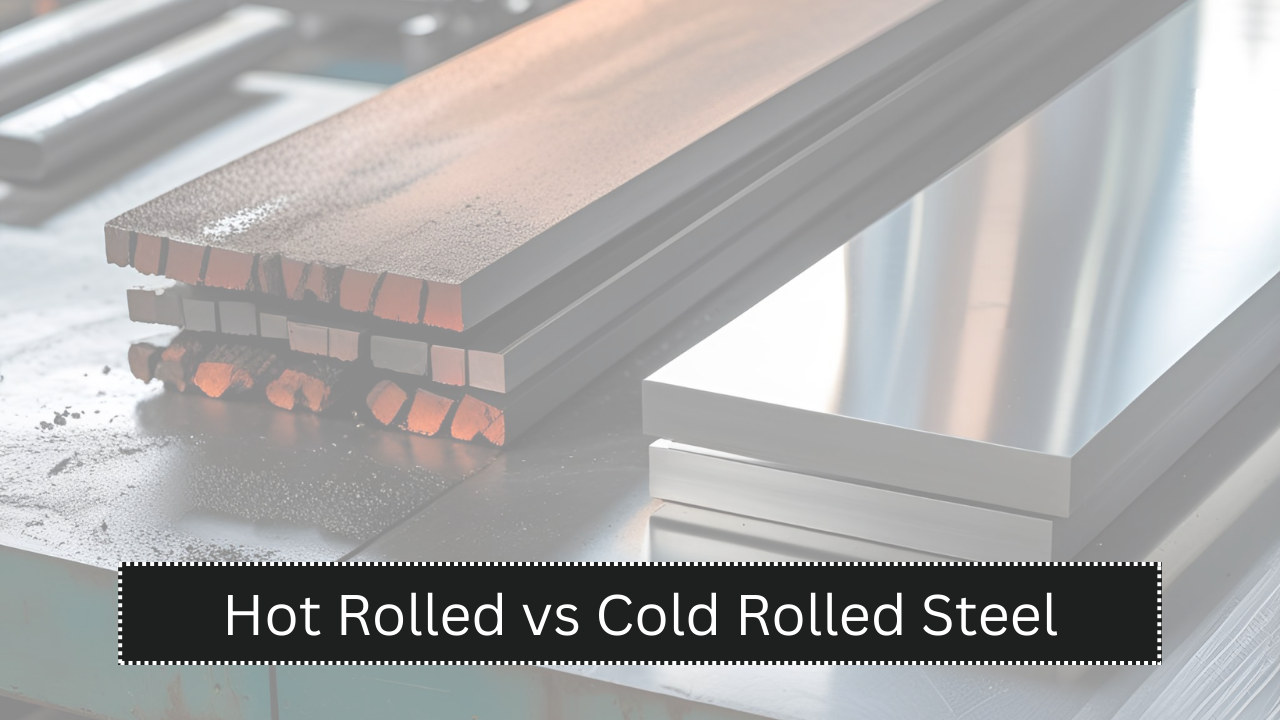Steel plays a vital role in construction, manufacturing, automotive, and many other sectors. Among the most commonly used steel types are hot rolled and cold rolled steel. Though they both originate from the same raw materials, their processing methods and resulting properties vary significantly. Understanding these differences helps in selecting the right type of steel for a particular application.
This guide highlights the essential differences between hot rolled and cold rolled steel, including their processes, characteristics, uses, advantages, and cost implications.
Understanding the Basics
Hot rolled steel is processed at high temperatures, typically over 1700°F, which is above the recrystallization point of steel. This process makes the steel easier to shape and form. It is usually used in situations where precise shapes and tolerances are not essential.
Cold rolled steel, on the other hand, is processed further at room temperature after the hot rolling process. The steel is re-rolled using high-pressure rollers, resulting in improved surface finish, tighter tolerances, and increased strength.
Comparison: Hot Rolled vs Cold Rolled Steel
| Feature | Hot Rolled Steel | Cold Rolled Steel |
|---|---|---|
| Processing Temperature | Above 1700°F (high temperatures) | Room temperature (after hot rolling) |
| Surface Finish | Rough, scaly surface | Smooth, shiny surface |
| Tolerances | Loose dimensional accuracy | Tight dimensional accuracy |
| Internal Stresses | Few internal stresses | High internal stresses due to compression |
| Formability | Easier to shape and form | Requires more force to shape |
| Strength | Lower strength compared to cold rolled | Higher strength and hardness |
| Price | Cheaper due to simpler process | More expensive due to additional processing |
| Appearance | Dull and scaled | Polished and clean |
| Applications | Structural components, railway tracks | Home appliances, automotive parts, furniture |
Manufacturing Process Overview
| Stage | Hot Rolled Steel | Cold Rolled Steel |
|---|---|---|
| Heating | Steel is heated to high temperature | Steel is first hot rolled, then cooled |
| Rolling | Rolled while hot to desired shape | Rolled again at room temperature |
| Cooling | Naturally cooled after shaping | Cooled before and after rolling |
| Finishing | Not further processed for surface quality | Surface is treated for smoothness |
Surface Quality
- Hot rolled steel has a rough surface with scale—a byproduct of the oxidation process at high temperatures. While the rough finish isn’t a problem in structural applications, it can be an issue where aesthetics or surface coatings are needed.
- Cold rolled steel has a smooth, clean surface that is easier to paint or coat. This makes it suitable for products where appearance matters.
Mechanical Properties
| Property | Hot Rolled Steel | Cold Rolled Steel |
|---|---|---|
| Tensile Strength | Lower | Higher |
| Yield Strength | Lower | Higher |
| Hardness | Moderate | High |
| Ductility | Higher | Lower |
Cold rolled steel is generally stronger and harder than hot rolled steel due to strain hardening during the cold rolling process. However, this also makes it less ductile and harder to form.
Dimensional Precision
Cold rolled steel provides superior dimensional precision and consistent thickness, making it ideal for applications that demand accuracy. Hot rolled steel, though more affordable, may vary in shape and size due to shrinking and cooling processes.
Cost Comparison
| Aspect | Hot Rolled Steel | Cold Rolled Steel |
|---|---|---|
| Raw Material Cost | Lower | Higher |
| Processing Cost | Less expensive | More expensive |
| Overall Price | Budget-friendly | Premium-priced |
The simpler and faster hot rolling process makes it a cost-effective option for large-scale projects. Cold rolled steel, with its added steps and refined finish, is priced higher but delivers superior quality.
Applications
Hot Rolled Steel Common Uses
- Construction beams and columns
- Railroad tracks
- Agricultural equipment
- Sheet piling
- Auto frames (non-exposed parts)
Hot rolled steel is best for applications where strength is more important than appearance or precision.
Cold Rolled Steel Common Uses
- Home appliances (refrigerators, washers)
- Automotive panels and body parts
- Furniture and file cabinets
- Bicycles and sports equipment
- Metal doors and frames
Cold rolled steel is preferred where both appearance and accuracy are essential.
Advantages of Hot Rolled Steel
- Lower cost: Suitable for large and heavy components where precision is secondary.
- Easier to work with: Due to its malleability and softness.
- Ideal for welding and fabrication: Because of fewer internal stresses.
Advantages of Cold Rolled Steel
- Higher strength: Ideal for components that must withstand force or wear.
- Better surface finish: Suitable for visible parts or those requiring paint or coating.
- Greater dimensional accuracy: Best for precision fabrication and detailed parts.
Limitations and Considerations
Hot Rolled Steel:
- Surface imperfections due to scaling.
- Less suitable for products that require tight tolerances.
- Possible dimensional changes as it cools.
Cold Rolled Steel:
- More costly due to extra processing.
- Can suffer from internal stress, which might cause warping after cutting.
- More brittle, making it harder to shape without cracking.
How to Choose Between Hot and Cold Rolled Steel
| Requirement | Recommended Option |
|---|---|
| Budget constraints | Hot Rolled Steel |
| High strength needed | Cold Rolled Steel |
| High precision needed | Cold Rolled Steel |
| Aesthetic surface finish | Cold Rolled Steel |
| Simple structural applications | Hot Rolled Steel |
| Forming complex shapes | Hot Rolled Steel |
| Welding ease | Hot Rolled Steel |
The selection between the two largely depends on the requirements of your specific project. While hot rolled steel is ideal for applications needing bulk material with no strict tolerances, cold rolled steel is preferred for detailed parts and surfaces requiring a smooth finish.
Summing Up
Steel products are not one-size-fits-all, and the distinction between hot rolled and cold rolled steel highlights that clearly. The decision to choose one over the other must consider surface finish, mechanical properties, dimensional accuracy, and cost.
Hot rolled steel is the go-to option for affordability and flexibility in structural projects, whereas cold rolled steel is best for high-end applications where appearance and precision are critical. A solid understanding of these materials ensures that you use the right steel for optimal performance and value.

